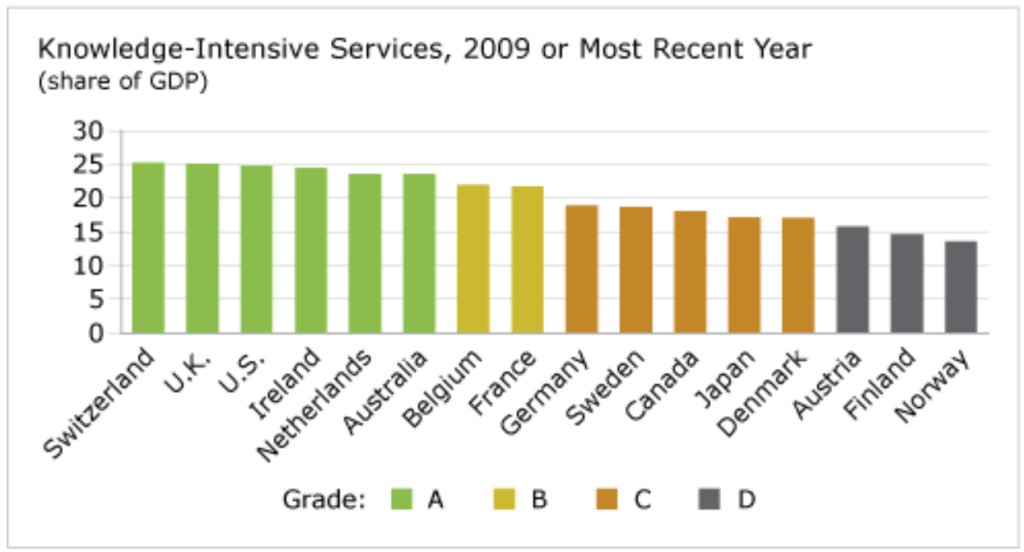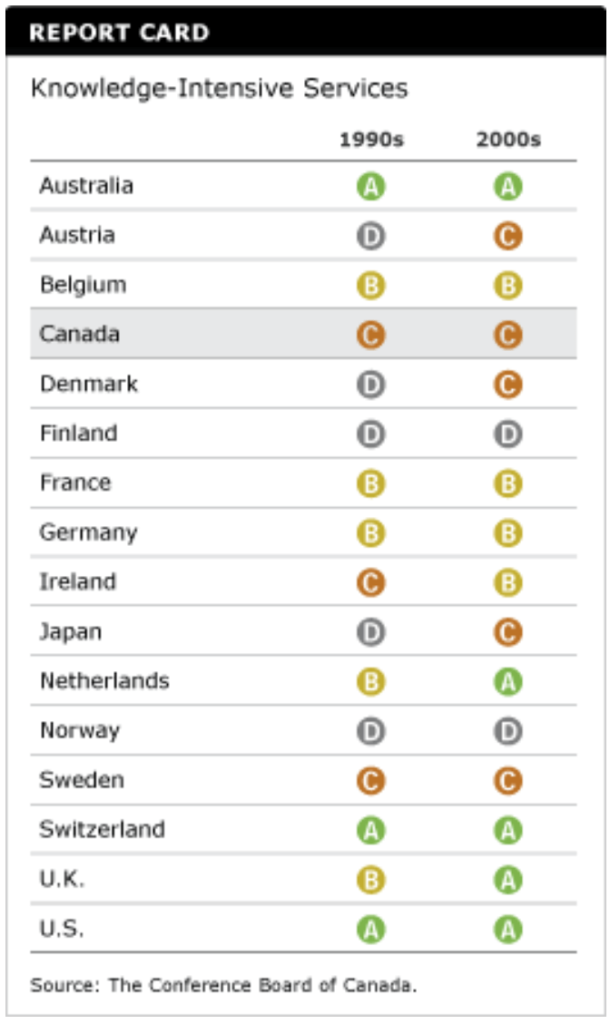Knowledge-Intensive Services
Key Messages
- Canada gets a “C” grade and ranks 11th out of 16 countries.
- Knowledge-intensive services account for about 18 per cent of total Canadian GDP.
- Knowledge-intensive services are gaining importance in the economies of all peer countries.

Putting knowledge-intensive services in context
Knowledge-intensive services industries are intensive users of high technology and/or have a highly skilled labour force necessary to use and exploit technological innovations. To identify knowledge-intensive services, the OECD analyzed each industry’s use of technology (based on input-output tables), each industry’s R&D intensity, and the workforce skills of each industry. Based on this analysis, the OECD defines three services industries as “knowledge-intensive”: post and telecommunications, finance and insurance, and business activities.
How does Canada perform relative to its peers?
Canada gets a “C” grade on its share of knowledge-intensive services in GDP and ranks 11th out of 16 countries. It is important to look also at Canada’s ranking on the complementary indicator—the share of GDP generated by high- and medium-high-technology manufacturing. Switzerland is an “A” performer on both indicators. The U.S., the U.K., and Australia are strong on knowledge-intensive services but relatively weak on high- and medium-high-technology manufacturing, while the opposite is true for Germany. Canada’s middle-of-the-pack ranking reflects its lack of specialization in either high-technology services or manufacturing.
Has Canada increased its share of GDP attributed to knowledge-intensive services?
Yes. Between 1980 and 2006, Canada experienced a steady increase in the importance of knowledge-intensive services. Knowledge-intensive services now account for 18.1 per cent of GDP, up from 11.2 per cent in 1980. Knowledge-intensive services increased in importance in all peer countries.
What accounts for Canada’s increase over the past three decades?
Canada’s market has become more open to limited competition within the financial and telecom sectors, and from private delivery services in the postal sector. Further economic integration with the U.S. has also enhanced the uptake of new technologies and applications in Canada by simultaneously increasing market size and competition.
How can Canada further improve its relative performance?

Canada’s relative ranking has been a “C” in each decade.
The scope to further expand advanced business services is greater now that most of Canada’s population lives in urban centres. Advanced services focus on value creation and management—such as marketing, organizational, and other design work, as well as coming up with ideas and planning—more than transaction facilitation.
More emphasis on R&D and labour force skills is essential if Canada is to catch up to the leaders.

